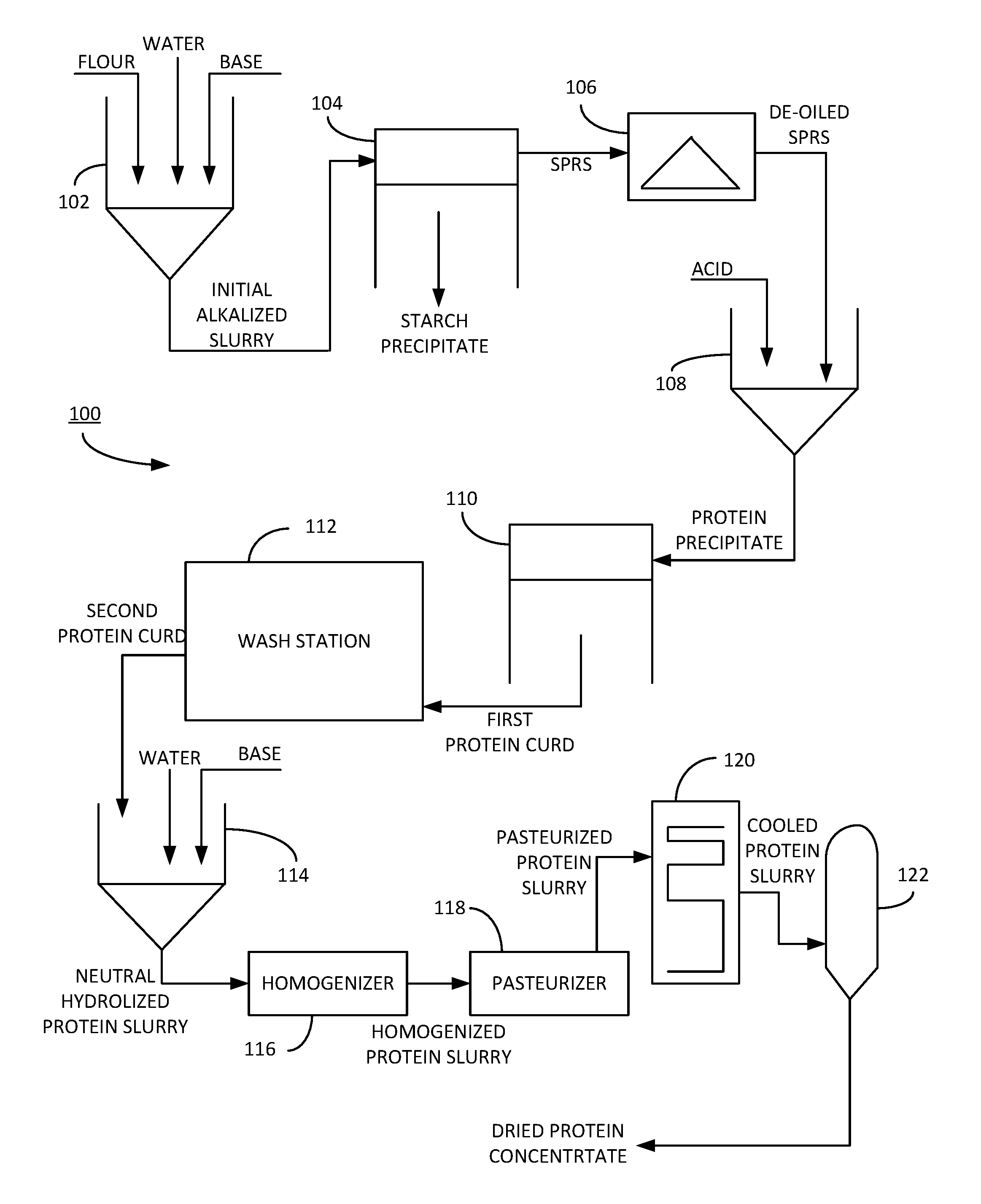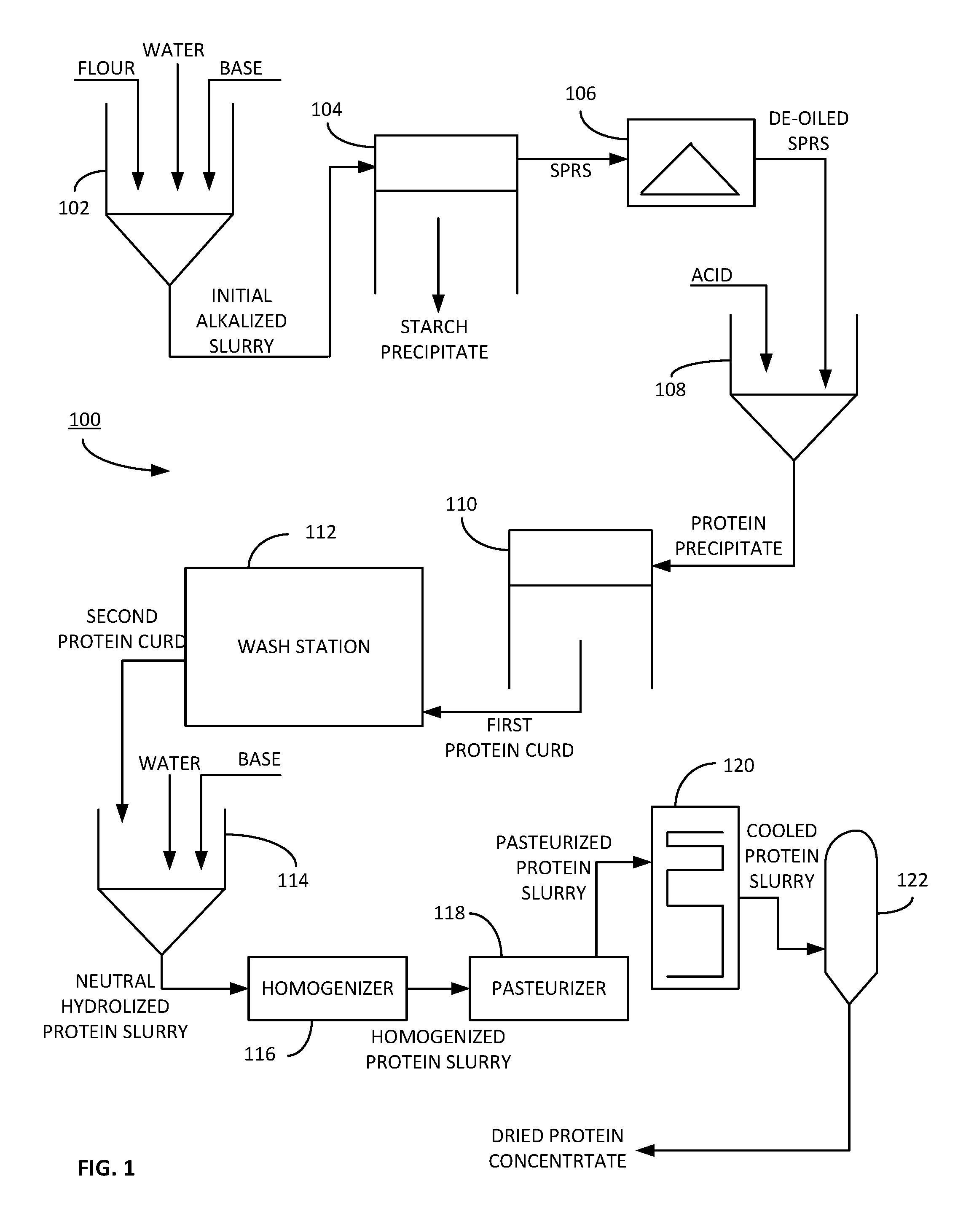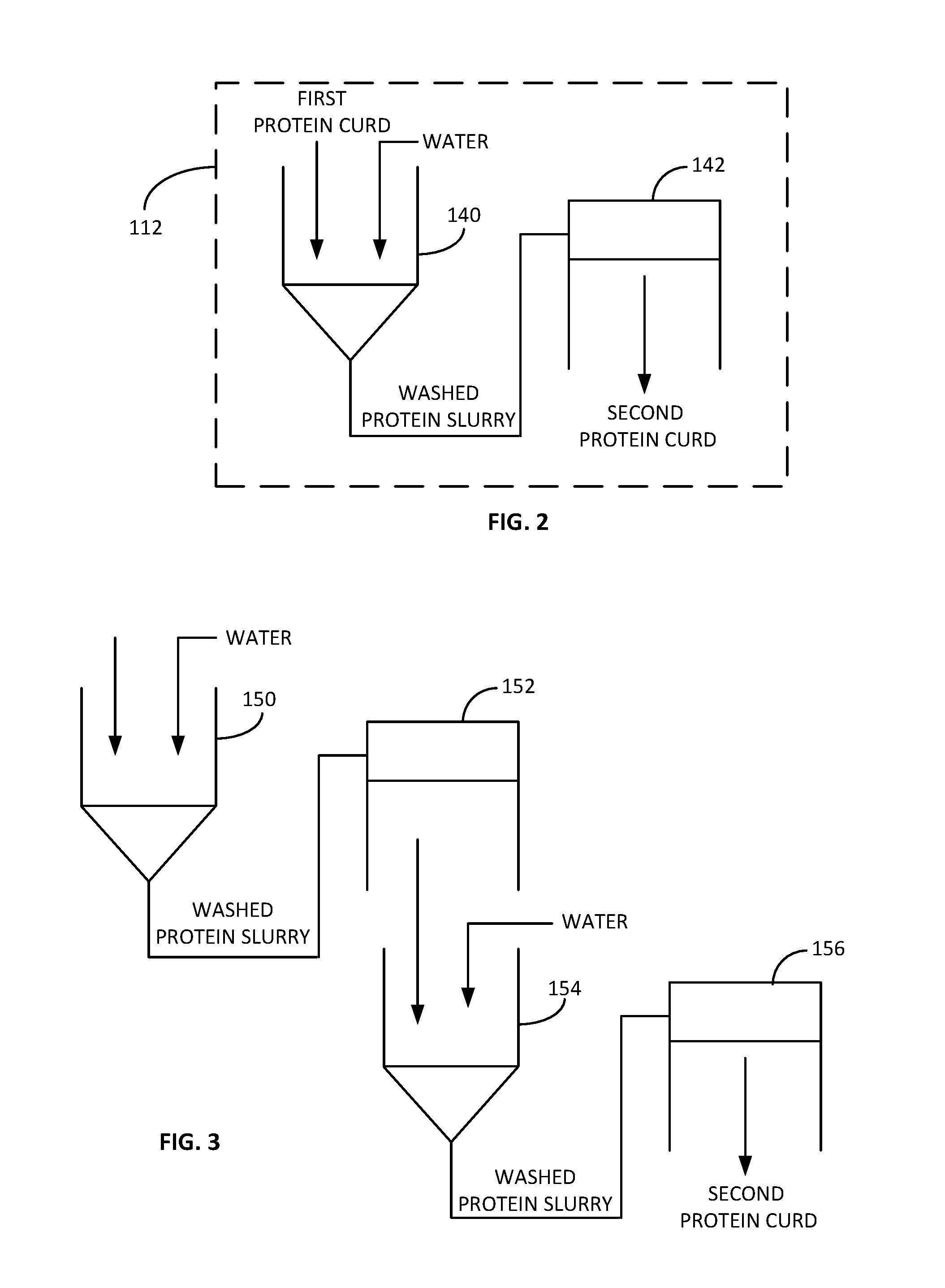Dry fractionation for plant based protein extraction
a plant-based protein and dry fractionation technology, applied in the field of plant-based food processing, can solve the problems of whey protein unavailable to vegan and other non-plant-based consumers, difficulty in obtaining whey protein, so as to reduce attendant moisture and improve operational efficiency
- Summary
- Abstract
- Description
- Claims
- Application Information
AI Technical Summary
Benefits of technology
Problems solved by technology
Method used
Image
Examples
Embodiment Construction
[0037]FIG. 1 illustrates a system 100 including a first mixer 102, a first separator 104, a second separator 106 and a second mixer 108. The system further includes a third separator 110, a wash station 112, a third mixer 114, a homogenizer 116, a pasteurizer 118, a vacuum evaporator 120 and a dryer 122.
[0038]FIG. 1 illustrates one embodiment of a process flow operation for generating the chickpea concentrate as described herein. In this embodiment, the process described herein makes the product of a chickpea concentrate.
[0039]The first mixer 102 receives flour, water and a base. In one embodiment, the flour is chickpea flour, but it is recognized that other suitable types of flour may be utilized. In this step, via the mixer, the flour is hydrated and there is a pH shift to solubilize the protein a solid-liquid extraction.
[0040]It is within the scope of the present invention that varying types of chickpea flour or the protein-based input ingredient(s) may be utilized, where the pro...
PUM
 Login to View More
Login to View More Abstract
Description
Claims
Application Information
 Login to View More
Login to View More - R&D
- Intellectual Property
- Life Sciences
- Materials
- Tech Scout
- Unparalleled Data Quality
- Higher Quality Content
- 60% Fewer Hallucinations
Browse by: Latest US Patents, China's latest patents, Technical Efficacy Thesaurus, Application Domain, Technology Topic, Popular Technical Reports.
© 2025 PatSnap. All rights reserved.Legal|Privacy policy|Modern Slavery Act Transparency Statement|Sitemap|About US| Contact US: help@patsnap.com



